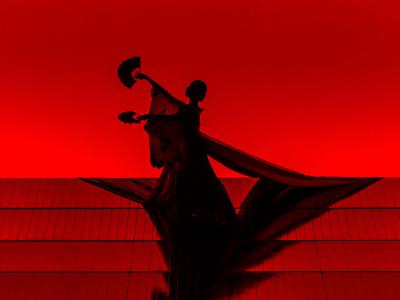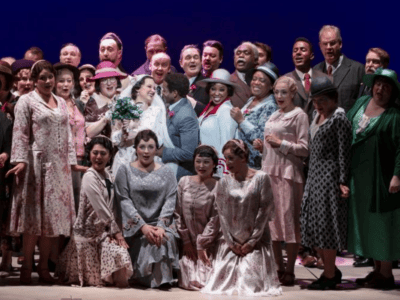
Claudio Monteverdi
(born Cremona, Italy 15 May 1567; died Venice, Italy 29 November 1643)
Claudio Monteverdi was an Italian composer best known for pioneering opera with masterpieces like L’Orfeo and L’incoronazione di Poppea, but his influence reaches far beyond that. Monteverdi is known for redefining the opera genre, with his work spanning across both the Renaissance and Baroque eras, he left a lasting legacy as a cornerstone of Western music.
Discover more about Claudio Monteverdi’s music, life and career, from his musical genius in childhood to his greatest works and how he became such an influential master of opera.
The life of Claudio Monteverdi: A summary
In this overview of Claudio Monteverdi’s life, learn about his upbringing in Italy, highlights of his career and key achievements that have made him one of the most important composers of the 17th century.
Early life and education
Born in 1567 in Cremona, Italy, Claudio Monteverdi’s early life was steeped in music. Nurtured by the city’s rich musical heritage and the rigorous tutelage of Marcantonio Ingegneri, the maestro of Cremona Cathedral, Monteverdi blossomed into a precocious prodigy.
A precocious talent, by 15 he had already published motets, showcasing his mastery of sacred music. His madrigals, infused with emotional depth and technical complexity, garnered praise and set him on the path to musical innovation.
Monteverdi’s thirst for knowledge likely led him to the University of Cremona, further broadening his intellectual horizons.
Career highlights
Claudio Monteverdi compositions range from dramatic operas like the mythical L’Orfeo and the politically charged L’incoronazione di Poppea to expressive madrigals like the war-infused Madrigali guerrieri et amorosi and the springtime masterpiece Zefiro torna. He wasn’t confined to secular works either, as his grand Vespro della Beata Vergine blends church tradition with operatic power.
L’Orfeo marked a crucial turning point in the evolution of dramatic music. Monteverdi’s innovative use of expressive musical techniques, his skilful handling of vocal and instrumental forces, and the incorporation of a coherent dramatic structure helped establish the foundations of operatic composition. This work laid the groundwork for the future development of the operatic genre, influencing many composers who followed in the Baroque era and beyond.
Claudio Monteverdi’s operas, along with his contributions to the development of other musical forms, solidify his legacy as a key figure in the transition from the Renaissance to the Baroque period.
Monteverdi served as the maestro di cappella (chapel master) at the Basilica di San Marco in Venice from 1613 until his death. This position was highly esteemed, and it allowed him to work with a skilled group of musicians and access the splendid acoustics of the Basilica.
Later life
Claudio Monteverdi’s later life was marked by continued success and recognition for his contributions to music. After the success of L’Orfeo, Monteverdi held various prestigious positions, and his compositions continued to be influential.
In addition to his operatic endeavours, Monteverdi continued to compose sacred music. He published several collections of sacred works, including the celebrated Selva morale e spirituale in 1640, which contains a rich variety of compositions ranging from large-scale choral settings to more intimate pieces.
Claudio Monteverdi died on November 29, 1643, in Venice. His legacy endured through his ground-breaking contributions to both secular and sacred music. His works had a lasting impact on the transition from the Renaissance to the Baroque period, influencing subsequent generations of composers. Monteverdi is remembered as a key figure in the history of Western classical music, particularly for his role in shaping the early development of opera.
Claudio Monteverdi’s musical style and influence
Monteverdi spent much of his career in Venice, where he was exposed to the Venetian School’s distinctive style. Composers like Andrea and Giovanni Gabrieli, who were associated with St. Mark’s Basilica, influenced Monteverdi’s understanding of spatial effects, antiphonal writing, and the use of multiple choirs and instrumental ensembles.
Characterized by its expressiveness, dramatic flair, and harmonic innovations, Monteverdi played a crucial role in shaping the transition from the Renaissance to the Baroque era. His contributions continue to resonate in contemporary discussions about the emotional impact of music and the development of operatic and harmonic practices.
Claudio Monteverdi’s compositions showcase a departure from the polyphonic and contrapuntal textures of the Renaissance, embracing a more expressive and dramatic approach characteristic of the Baroque era. His music is marked by a heightened emphasis on the expression of emotion as he sought to convey the meaning of the text through his music, giving priority to the emotional content of the words.
Monteverdi’s interest in the emotional content of the text and his emphasis on drama in music can be seen as a reflection of Humanist ideals. Additionally, his operatic works were influenced by ancient Greek drama and the concept of a synthesis of music and drama.
Claudio Monteverdi’s most famous songs
- ‘Possente spirto’ – L’Orfeo (1607)
- ‘Ecco l’atra palude’ – L’Orfeo (1607)
- ‘Pur ti miro’ – L’incoronazione di Poppea (1643)
- ‘Lamento della Ninfa’ – from Madrigals, Book VIII (1638)
- ‘Cruda Amarilli’ (‘Cruel Amarilli’) – from Madrigals, Book V (1605)
- ‘Lamento d’Arianna’ (‘Lament of Ariadne’) – from Madrigals, Book V (1605)
Claudio Monteverdi's most famous operas
- L’Orfeo (1607)
- L’incoronazione di Poppea (1643)
- Il ritorno d’Ulisse in patria (1640)
Considered one of the greatest composers of all time, Claudio Monteverdi was a pioneer who helped to shape the course of Western music. If you want to learn more about opera, you can find out more on our Discover Opera page.
FAQs
How did Claudio Monteverdi die?
Monteverdi’s death was attributed to natural causes, though the exact details remain unknown. He was laid to rest in the Church of the Frari in Venice, where a monument still stands in his honor.
When was Claudio Monteverdi born?
Claudio Monteverdi was born on May 15, 1567, in the city of Cremona, Italy.
Where was Claudio Monteverdi born?
Claudio Monteverdi was born in the city of Cremona, Italy.
What instruments did Claudio Monteverdi play?
Claudio Monteverdi’s musical expertise extended beyond composing. His proficiency in playing the viol, organ, and likely other string instruments and singing influenced his compositions and contributed to his profound impact on the musical landscape.
Where did Claudio Monteverdi live?
Cremona, Mantua, and Venice were the primary cities where Monteverdi lived and created his legacy-defining music. Each location offered unique cultural and musical settings that shaped his artistic evolution and left a lasting impact on the history of music.


